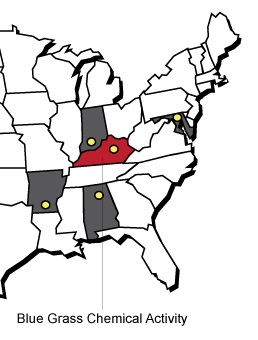The United States Congress directed the US Army to destroy certain kinds of chemical weapons stockpiled at eight US Army installations in the continental US. The last chemical weapon stored at the Blue Grass Army Depot (BGAD) was destroyed July 7, 2022. This destruction not only marks the elimination of all chemical weapons at the Blue Grass Army Depot, but the destruction of all chemical weapons in the U.S. stockpile.
The accomplishment has been reported to the Organization for the Prohibition of Chemical Weapons, an intergovernmental organization that implements the Chemical Weapons Convention treaty. The Program Executive Office, Assembled Chemical Weapons Alternatives (PEO ACWA) was responsible for eliminating the U.S. chemical weapons stockpile by the treaty commitment date of Sept. 30, 2023.
While the last chemical weapon at Blue Grass Army Depot has been destroyed, agent-contaminated secondary waste remains and so does the risk of chemical exposure. Public safety will continue to be paramount when making decisions on how to transition to the end of CSEPP and its associated funding.
The last remaining Army stockpile participating site is:
- Blue Grass Chemical Activity located on Blue Grass Army Depot (Kentucky)
Through the help of FEMA and the Army, these communities are expanding emergency plans and capabilities to meet the slight but real threat of a chemical agent emergency. These communities have plans and procedures in place to deal with a stockpile accident.

CSEPP Funding and Administration
As with other FEMA emergency preparedness programs, CSEPP is administered through the states. FEMA distributes funds to the states under cooperative agreements based on an annual work plan negotiated between the states and FEMA regional offices. States are responsible for financial accountability and observing federal grant management rules and provide quarterly financial and performance reports addressing the capability improvement realized through these funds.
CSEPP communities have been recognized nationally for their abilities to respond to emergencies of all kinds. Since its inception, CSEPP has become a leader in providing community education and emergency preparedness resources. CSEPP has provided funding and technical assistance to:
- Improve public warning capabilities
- Build and upgrade state-of-the-art emergency operation centers
- Train emergency managers and first responders
- Hold functional exercises to improve readiness
- Increase public knowledge and understanding of protective actions
- Over-pressurize schools to ensure the safety of children
- Study emergency response options to determine the best way to protect communities
- Train doctors and nurses to treat victims of chemical agent exposure